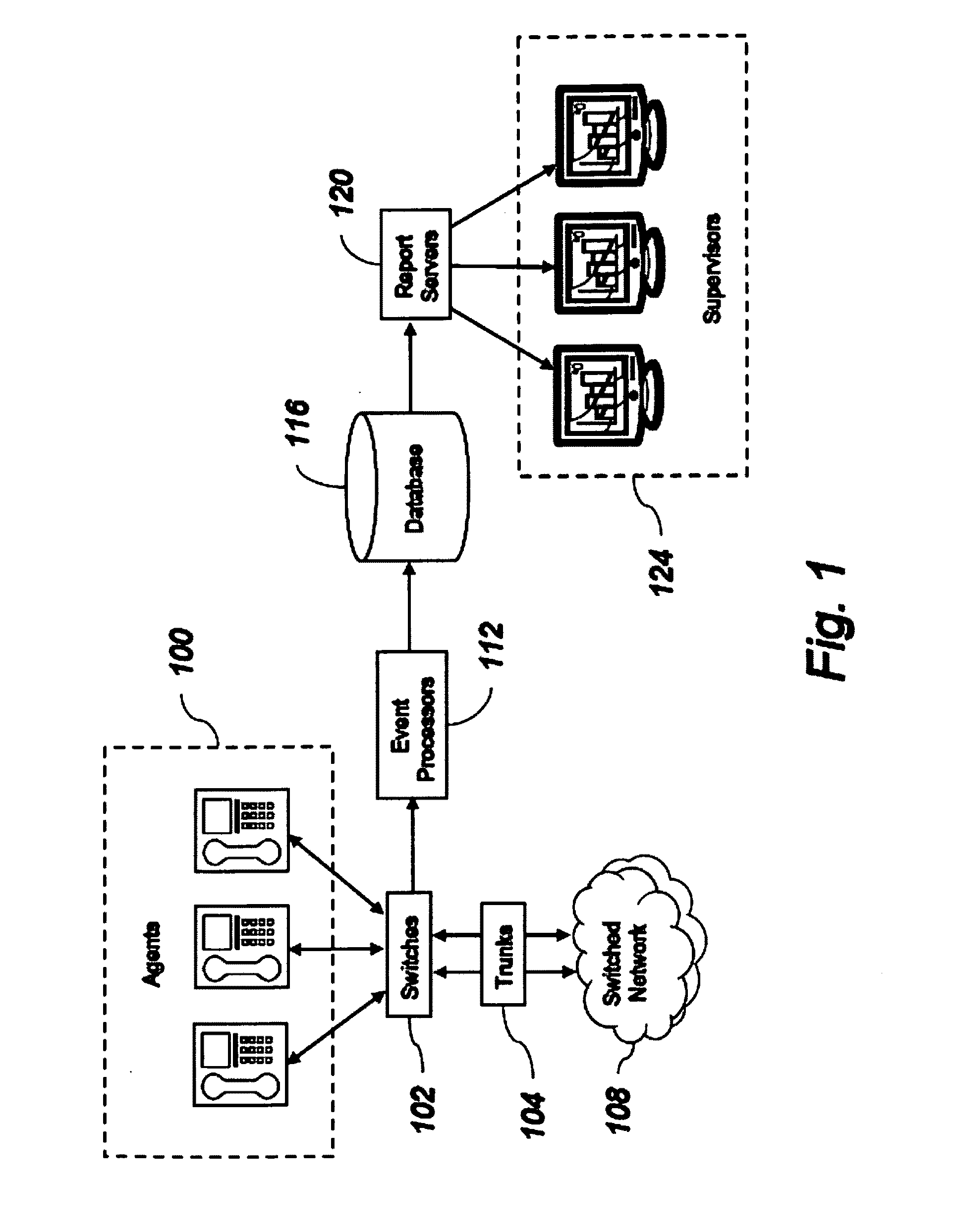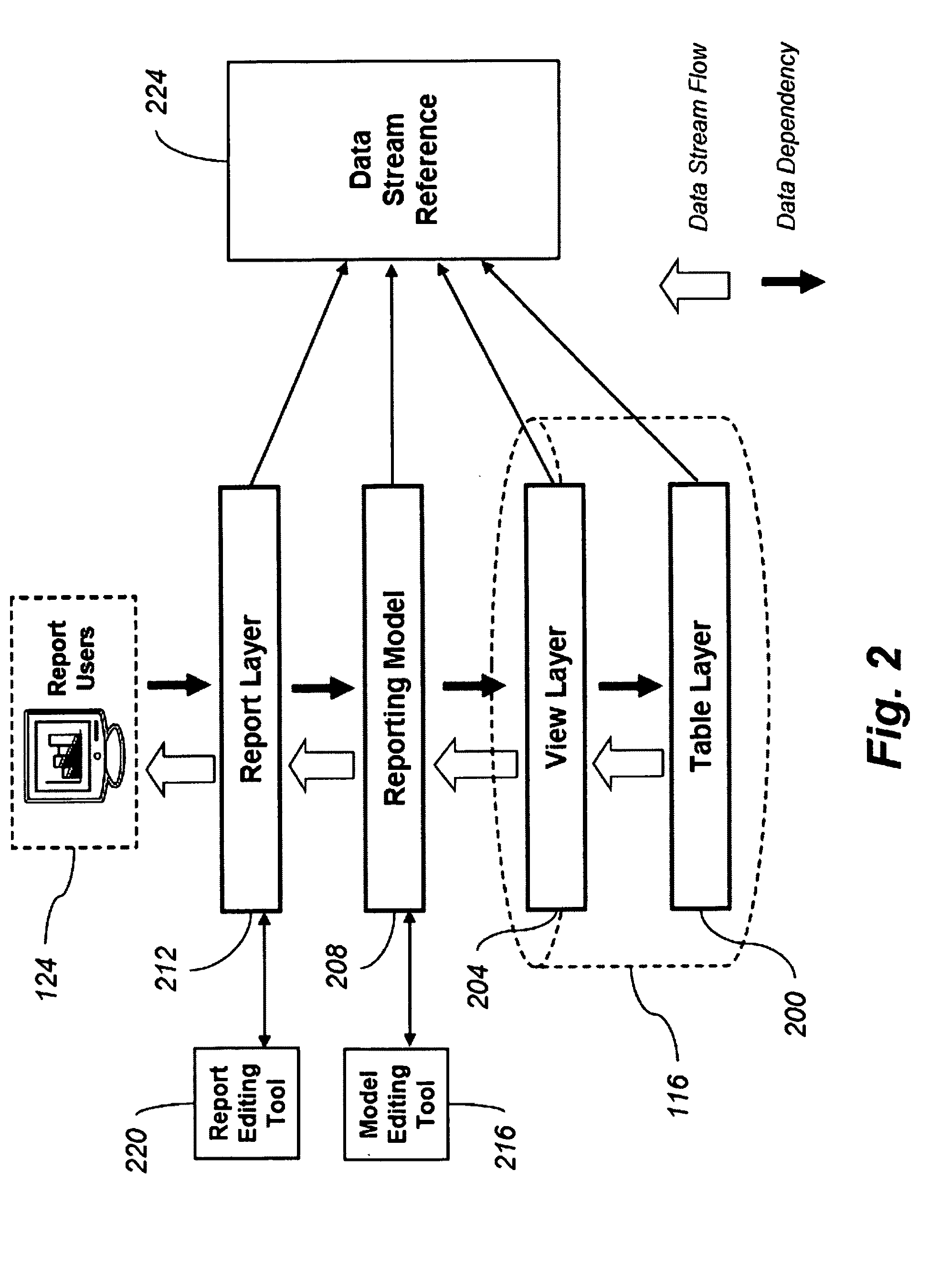Report database dependency tracing through business intelligence metadata
a business intelligence and metadata technology, applied in the field of database reporting, can solve the problems of business intelligence software generally providing only limited database dependency information to an unsophisticated user, unable to identify the particular items within the report that reference the object in question, and giving occasional false assurances, etc., to achieve the effect of not adversely affecting the integrity of the underlying data structur
- Summary
- Abstract
- Description
- Claims
- Application Information
AI Technical Summary
Benefits of technology
Problems solved by technology
Method used
Image
Examples
Embodiment Construction
[0073]Although the present invention is discussed with reference to a contact center architecture, it is to be understood that the invention can be applied to numerous other architectures, such as business intelligence applications. The present invention is intended to include these other architectures.
The Contact Center Architecture
[0074]FIG. 1 shows an illustrative embodiment of the present invention. Agent communication devices 100 are connected via switches 102 to trunks 104. The trunks 104 connect to circuit and / or packet switched network(s) 108. Customer communication devices (not shown) communicate with the agent communication devices 100 via the network(s) 108.
[0075]The agent communication devices 100 and incoming contacts from customer communication devices can be assigned to one another using a queue configuration. Each contact queue (not shown) corresponds to a different set of agent skills, as does each agent queue (not shown). Contacts are prioritized and either are enq...
PUM
 Login to View More
Login to View More Abstract
Description
Claims
Application Information
 Login to View More
Login to View More - R&D
- Intellectual Property
- Life Sciences
- Materials
- Tech Scout
- Unparalleled Data Quality
- Higher Quality Content
- 60% Fewer Hallucinations
Browse by: Latest US Patents, China's latest patents, Technical Efficacy Thesaurus, Application Domain, Technology Topic, Popular Technical Reports.
© 2025 PatSnap. All rights reserved.Legal|Privacy policy|Modern Slavery Act Transparency Statement|Sitemap|About US| Contact US: help@patsnap.com



